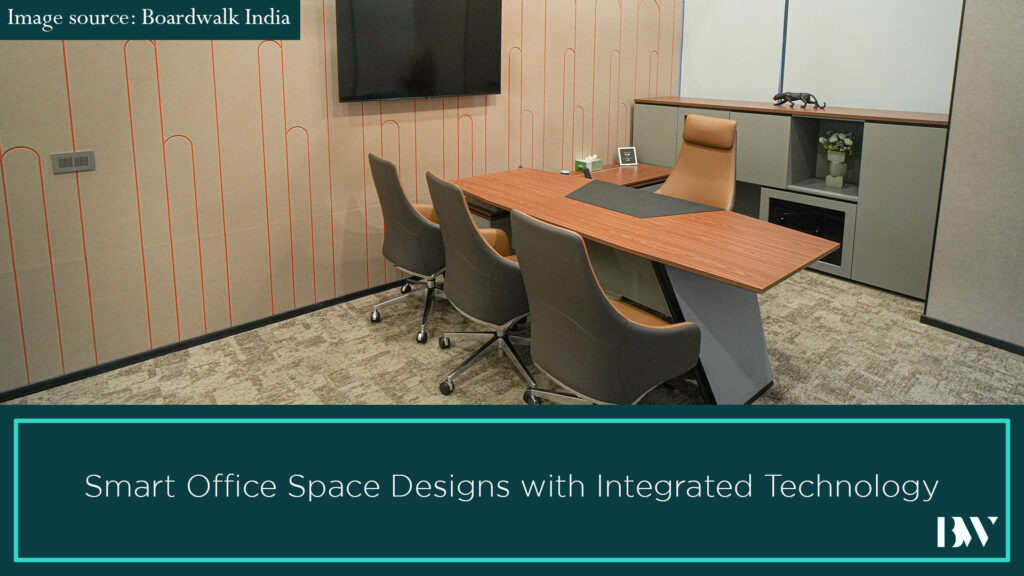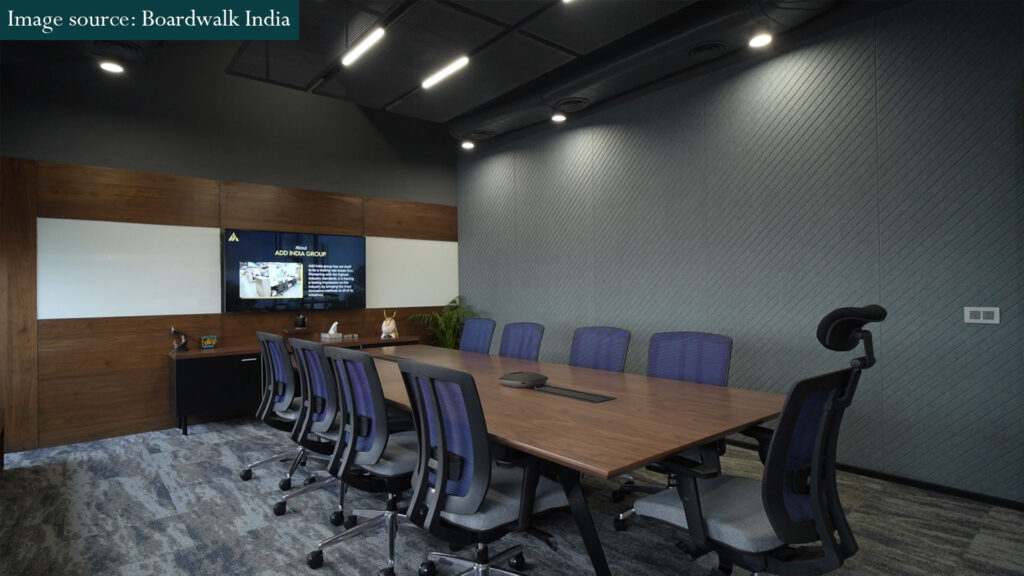Smart Office Space Designs with Integrated Technology

There are plenty of reasons to embrace a smart office, but there are just as many reasons to dismiss it as simply another cliché.
What exactly is a “smart office” then?
Please continue on as we delve deeply into the features of smart office space design!
Table of Contents:
- What is Smart Office Space design?
- What Makes a Smart Office Space Design?
- Interactive Floor Plans for Optimised Office Space Design Utilisation
- Colleague Finding Tools for Locating Co Workers within the Office Space Design
- The Benefits of Smart Office Space Design

What is Smart Office Space design?
When technology is smoothly incorporated into the working setting, it’s called a smart office space design. Workflows are accelerated, communication is improved, and overall, management and leadership find it simpler to get through the workday.
What Makes a Smart Office Space Design?
This is when the exciting part starts.
These days, the term “smart” is used somewhat loosely. You are aware of what a smartphone or smart TV is. However, there are a number of factors and characteristics to take into account when it comes to bigger, more intricate items like offices.
Smart office space design is often defined as having technology that facilitates, enhances, and supports your work, ideation, and product delivery. A smart workplace should simplify and improve the productivity of your work, regardless of whether you are employed in manufacturing, SaaS, or almost any other kind of organisation.
While implementing some of the more crucial “smart office” elements will get you a long way, you don’t have to hit every one of the lists. Some components of a smart office that you might adopt really easily are as follows:
Automated Lighting
One of the things that can significantly impact how comfortable and productive your staff members are during the day is smart lighting. Automatic lighting systems have the ability to sense movements in the workplace and adjust the lighting to create the ideal mood by dimming or brightening.
Employee & Visitor Check-In
This one is really simple, but it can help you stay compliant and save time and money. With the use of employee and visitor check-in systems, you can monitor who is in the office, how long they have been there, and gather basic data (such as their name and the purpose of their visit). Furthermore, they are frequently integrable with other systems, such as time tracking.
Smartphone-Controlled Temperature
The ease of management of contemporary HVAC systems is facilitated by their accompanying smartphone application, which is growing more sophisticated. In order to provide a comfortable working atmosphere, employees can control the temperature in their local proximity, and management can monitor and modify the system remotely.
Interactive Floor Plans for Optimised Office Space Design Utilisation
Interactive floorplans serve as virtual blueprints that alter the way employees engage with their environment while on the job. These clever designs allow customers to book office space designs in advance of entering the facility and provide real-time visibility into available desks, meeting rooms, and quiet areas!
Voice Assistants
Voice assistants, such as Google Home and Amazon Echo, are already typical in both homes and workplaces. You won’t need to master complex software to accomplish basic activities thanks to voice-activated working tools. It can also assist maintain a more efficient and organised workplace.
Flexible Seating & Desk Configurations
The days of everyone having to sit at a desk are long gone. Not only may flexible desk arrangements facilitate remote work, but they can also improve comfort in the workplace. It will also free up important room for other artistic endeavours or occasions.
Desk Booking Software for Flexible Seating Arrangements
When assigning hot desks or permanent stations across teams dynamically modifying sizes based on tasks at hand, the secret to real flexibility lies in utilising desk booking software—a modal shift known as “activity-based working.”
Meeting Room Management
Easily scheduling a meeting office space design without needless emails or phone calls is no longer a pipe dream—it’s made possible by smart office technology. With conference room scheduling software at your disposal:
- Bookings and checking room availability are simple for staff members.
- Administrators keep an eye on consumption trends to maximise office space design usage.
- It is possible to book meeting equipment at the same time as a room.
The smooth integration guarantees not only time savings but also increased productivity—all meetings begin on schedule, free from last-minute tech malfunctions or scurrying for office space design.
Colleague Finding Tools for Locating Co Workers within the Office Space Design
Have you ever found yourself aimlessly navigating a maze of workstations in an attempt to locate a colleague? Colleague-finding tools greatly limit these adventures. If you can’t quickly locate coworkers via a desktop interface or an app, what kind of office is it? This clever innovation eliminates physical barriers in large or complex office layouts, saving time and encouraging departmental collaboration.
Colleague Finding Tools for Locating Co Workers within the Office Space Design
Interactive Whiteboards & Touchscreens
Interactive whiteboards and touchscreens might be a terrific addition to your office if you’re searching for a way to increase the productivity of ideation and collaboration. They allow several individuals to collaborate on projects in real time and are simple to use.
Smartphone-Adjustable Desks
Always put your employees’ comfort and health first, especially if you want them to stay content and productive. People can maintain better posture and productivity by adjusting their desk to the ideal height from anywhere in the office using smartphone-adjustable desks.
Sensors and Other Devices for Capturing Data
Another world is integrated throughout, where sophisticated gadgets and sensors covertly observe and control an organisation’s most vital component: its surroundings. From occupancy levels to temperature management, these unsung heroes collect vital information that is used in a variety of ways.
- To optimise comfort while minimising energy use in HVAC operations.
- To gather occupancy data that will improve facility hygiene standards and cleaning schedules.
Through the implementation of these tools, companies embody the essence of dynamic adaptation, enabling them to not only respond to but also actively change in response to changing workplace standards.
The Benefits of Smart Office Space Design
For good reason, smart offices are becoming more and more popular; they can significantly impact your company. Here are just a few advantages:
Increased Productivity
Employee productivity can be increased with the use of smart office technology, which facilitates quicker communication, better teamwork, and more effective time management. Employee communication and collaboration can be facilitated, for instance, by integrating a cloud-based platform for communication and collaboration into your workplace.
Better Collaboration
Increased productivity is a key benefit of switching to smart workplace settings. Employees may effortlessly manage and keep an eye on their workflow in such a situation by using apps. These apps, which frequently make use of Internet of Things (IoT) technologies, effortlessly incorporate features like time monitoring, work scheduling, and even office tracking for available resources. These amenities greatly reduce disruptions to production and promote an atmosphere that encourages high levels of productivity.
Enhanced Security
Particularly when it comes to cybersecurity, smart offices are typically more secure. This is because smart office solutions frequently have built-in security features like encrypted data transfer, protected access forms, and two-factor authentication.
Higher Employee Satisfaction
Employee morale can be positively impacted by smart office space design. You may demonstrate your concern for your employees’ time and energy by giving them the technology and tools they need to work more productively. They’ll be more content and effective at work as a result, and you’ll be able to increase staff retention as well.
Improved Data Collection
It is not the intention to play “Big Brother.” By using smart office technologies, you may gather information about consumer behaviour, office usage, employee performance, and other metrics without violating people’s privacy. This enables you to streamline your procedures and make wiser selections.
More Cost-Effective Operations
An investment goes into a smart office. However, when you consider the long-term advantages of increased security, better productivity, happier workers, and better data collecting, it’s worth it.
Conclusion
The term “smart office” has evolved into a genuine, workable, and essential approach for companies of all kinds. Investing in the appropriate technology can help you streamline operations, cut expenses, boost output, and ensure that your staff members are performing at their highest levels.
For more information on smart office space designs with integrated technology, visit us at www.boardwalkindia.com
